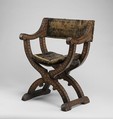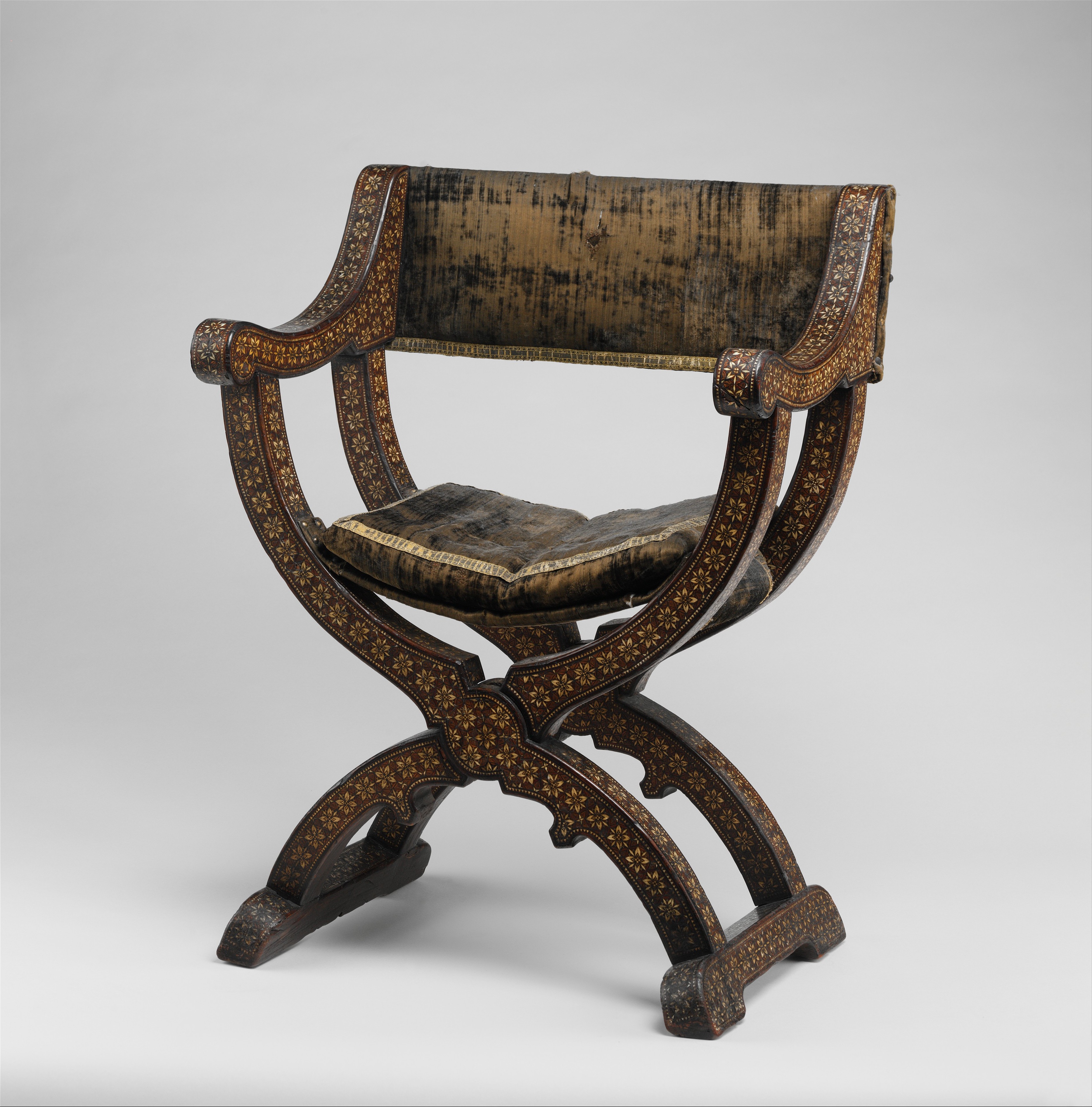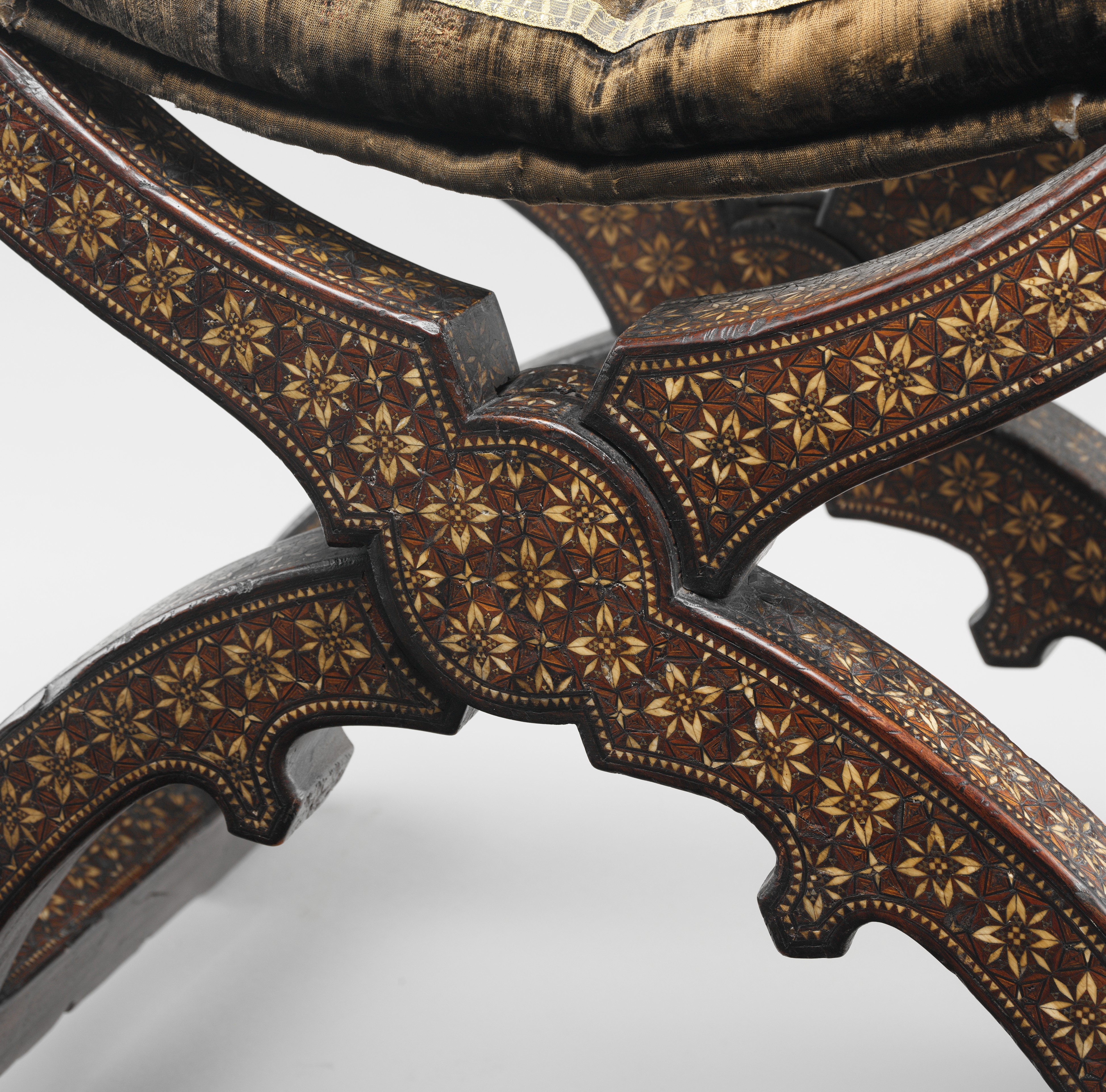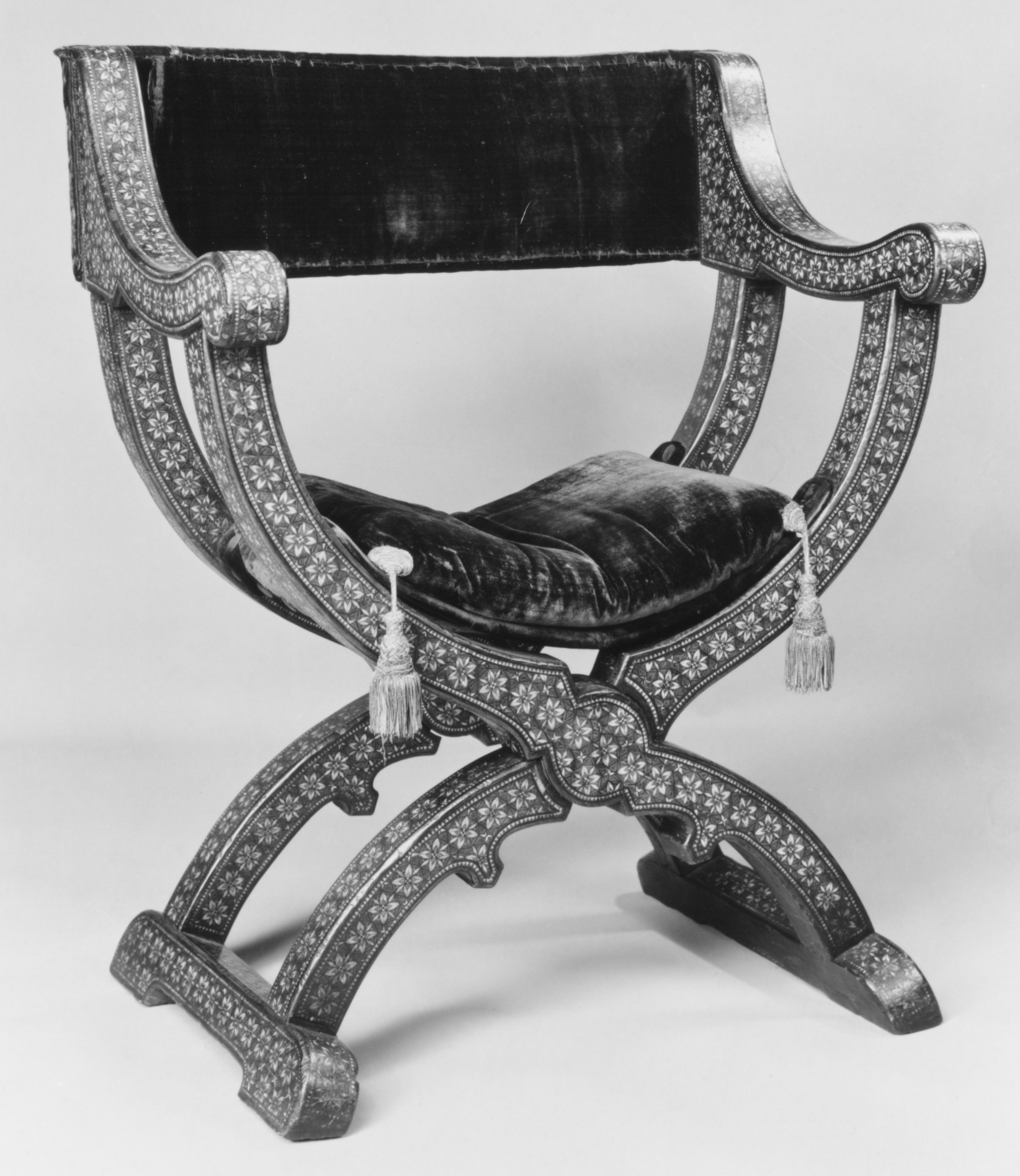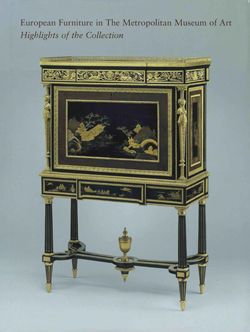Hip-joint armchair (sillón de cadera or jamuga)
Not on view
The form of this chair is derived from the ancient Greco-Roman faldistorium, an armless folding chair used by high-ranking officials when not occupying their thrones of office. Although the present chair also appears to be collapsible for easy transport, its X frame is not constructed to permit this. Clearly, the form has been retained to evoke its traditional ceremonial aspect.
The use of such chairs persisted around the Mediterranean throughout the Middle Ages. In Spain, converted Muslims continued to produce them after the Catholic reconquest, employing the skillful style of inlay practiced under earlier Islamic rule. The conquistadors carried similar chairs to the Americas, where they functioned as emblems of authority. The plain velvet on this example is a replacement of the original, most likely very elaborate, upholstry.
This image cannot be enlarged, viewed at full screen, or downloaded.
This artwork is meant to be viewed from right to left. Scroll left to view more.
